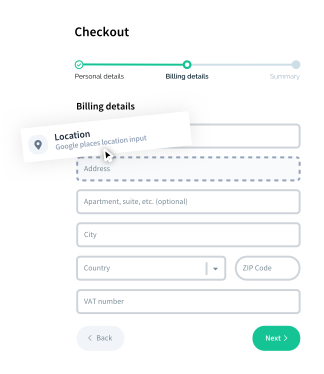FormLanguages
Renders a language selector for translatable elements using FormLanguage components.
Basic Usage
<FormLanguages> component can be used in <Vueform> component's #empty slot:
<template>
<Vueform>
<template #empty>
<FormLanguages>
<FormLanguage
language="English"
code="en"
/>
<FormLanguage
language="Chinese"
code="zh"
/>
</FormLanguages>
<FormElements>
<TTextElement
name="title"
label="Title"
/>
<TEditorElement
name="article"
placeholder="Article content..."
/>
</FormElements>
</template>
</Vueform>
</template>Options
Find below the list of options that can use to configure FormLanguages component. Options can be passed to the component via props.
view
- Type:
string
<FormLanguages view="alt" ... />The name of the view to be used for the component and child components (FormLanguage). If undefined the default view will be used.
Learn more about views here.
Properties
All the data, computed and inject properties of the component.
language
- Type:
string - Group:
computed
The language code of the currently selected language (2 letters).
languages
- Type:
object - Group:
computed
The available languages.
Size
- Type:
string - Group:
inject
The size of the component.
View
- Type:
string - Group:
computed
The name of the resolved view for the component. This one should be used to determine the component's view in class functions.
template
- Type:
object - Group:
computed
The component's template.
classes
- Type:
object - Group:
computed
The component's classes.
theme
- Type:
object - Group:
inject
The global theme object, which contains all the default templates and classes.
form$
- Type:
Vueform - Group:
inject
The root form's component.
Methods
The methods of the component.
select
- Arguments:
{string} code*- the language code to be selected
- Returns:
void
Selects a language.


